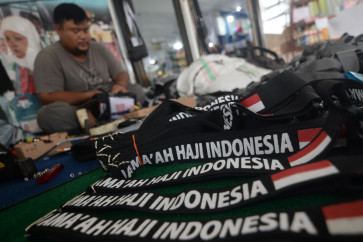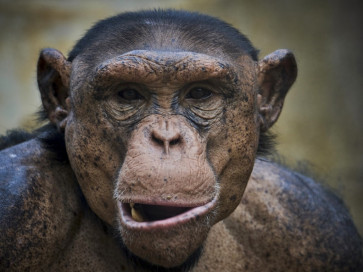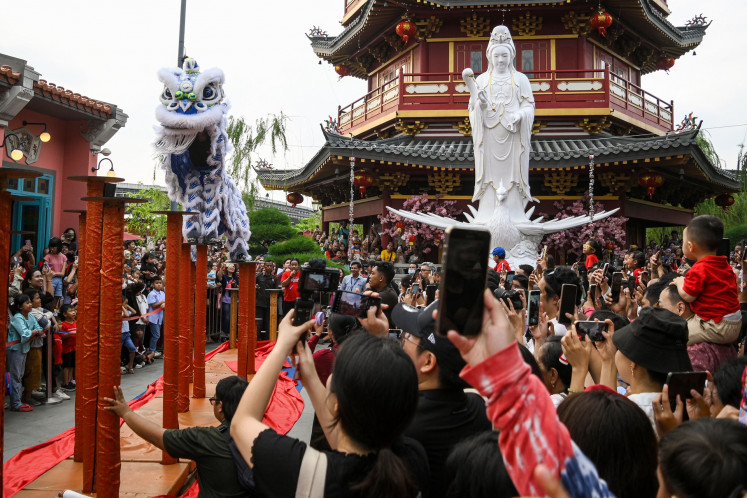Taiwan machinery industry faces challenges in RI
The Taiwan machinery industry is seeking more Indonesian customers through the 2018 Taipei Plastic and Rubber Machinery Show (Taipei Plas) and the Taipei International Shoe-Making Technology Show (ShoeTech Taipei) as it faces challenges to strengthen its grip on Southeast Asia’s biggest economy
Change text size
Gift Premium Articles
to Anyone

T
he Taiwan machinery industry is seeking more Indonesian customers through the 2018 Taipei Plastic and Rubber Machinery Show (Taipei Plas) and the Taipei International Shoe-Making Technology Show (ShoeTech Taipei) as it faces challenges to strengthen its grip on Southeast Asia’s biggest economy.
Taiwan Association of Manufacturing Industry (TAMI) president CC Wang said Taiwan sold various types of manufacturing machines to Indonesian companies, from footwear processing machines to plastics processing machinery.
For several decades, Taiwan’s machines were a favorite among Indonesian manufacturers.
However, the Taiwan machinery industry now is facing various challenges in Indonesia, such as competition from China.
“Some [Indonesian] companies now buy machines from China because the price is lower. [Taiwanese machines] face import tax, but some Chinese machines are free from tariffs,” Wang told The Jakarta Post on the sidelines of the Taipei Plas and ShoeTech Taipei held by jointly by TAMI and the Taiwan External Trade Development Council (Taitra) in Nangang Exhibition Center in Taipei, Taiwan, on Wednesday.
He urged Taiwanese and Indonesian companies to hold further business-to-business meetings.
“We need more cooperative meetings between industries. Both sides need to discuss which kind of machines [Indonesia] needs and what kind of technology they want,” Wang said.
According to data from TAMI, Indonesia was the second-largest export destination for
Taiwanese footwear processing machinery in 2017 at US$13.7 million from the total $103.1 billion in exports.
Although Indonesia is second on Taiwan’s list, exports to Indonesia are still much lower compared to that of Vietnam at $51 million in 2017.
Indonesia is also Taiwan’s fourth-largest export destination for plastics and rubber machinery in 2017 at $89.2 million, or about 7.7 percent of the total $1.16 billion in exports.
Taiwan’s biggest market for this sector in 2017 was China (21.3 percent), followed by Vietnam (12 percent) and India (7.9 percent).
Taiwanese Vice President Chen Chien-jen urged local machinery manufacturers to connect with more foreign buyers to promote their products.
“[The Taiwanese machinery industry] should step out of the island and reach out to more buyers in the world to explore overseas markets,” the vice president said during the opening of the event on Wednesday.
Separately, Indonesian Olefin, Aromatic and Plastics Industry Association (Inaplas) secretary-general Fajar Budiono said Taiwanese machinery had contributed to Indonesia’s plastics industry since the 1970s.
“The quality [of Taiwanese machinery] is good and the price is affordable,” Fajar told the Post via text message on Wednesday.
Like Wang, however, Fajar said Taiwan now faced competition from China to capture the hearts of Indonesian manufacturers. Fajar said Chinese companies now made high-quality machinery and offered leasing packages.
Indonesian Footwear Association (Aprisindo) chairman Eddy Widjanarko said since 30 years ago, large-scale footwear factories in Indonesia had utilized footwear processing machinery imported from Taiwan.
Eddy revealed that up to 90 percent of large-scale footwear factories in Indonesia used machinery imported from Taiwan.
“We hope to maintain the close [business-to-business] relations between Indonesia and Taiwan [in the footwear and machinery industries] because Taiwan has greatly helped shape the history of Indonesia’s footwear industry,” Eddy told the Post.
According to the Industry Ministry, Indonesia’s rubber and footwear industries are among the largest contributors to the country’s manufacturing industry.
Data from the ministry shows that Indonesia’s manufacturing industry grew 4.41 percent year-on-year (yoy) in the second quarter of 2018, higher than 3.93 percent growth in the corresponding period, last year.
Industry Minister Airlangga Hartarto previously said the manufacturing sector contributed 19.33 percent to the country’s GDP, the largest contributor to economic expansion.
He explained with its contribution of 11.85 percent, the rubber industry and its related products were the largest contributor to the non-oil and gas sector, followed by the leather and footwear industry (11.38 percent).









